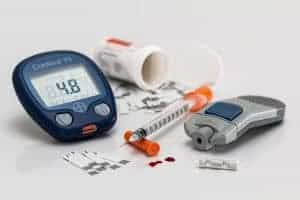Do you know about Pulse Oximeter Readings… normal oxygen levels? Do you want to know how to get accurate pulse oximeter readings? Your tissues, cells and all other organs of the body need oxygen for the proper functioning. Without proper oxygen, you can face many health complications and dire conditions.

To measure the oxygen saturation levels of your body, you can use a Pulse Oximeter. The process is painless and you will get timely information. Notwithstanding any of the information in this article consult your doctor on the use of this device and how it can be used to monitor your particular health situation.
Important Note: Notwithstanding any of the information in this article consult your doctor on the use of this device, and how it can be used to monitor your personal health situation. Also, consult the instructions and warnings for your particular device.
How do Pulse Oximeter’s Work?
Pulse Oximeter evaluates the amount of the deoxygenated and oxygenated hemoglobin in the arterial blood that transfers oxygen from your lung to other organs of your body. Each molecule of the hemoglobin carries four molecules of oxygen. When all the molecules of the hemoglobin carry four molecules of oxygen, the oxygen saturation becomes one hundred percent. During this condition, the deoxygenated blood absorbs more red lights and the oxygenated hemoglobin absorbs more infrared light. A photodetector located opposite the light emitter on the Pulse Oximeter gets the lights and determines the ratio of red to the infrared light that provides the oxygen saturation percentage. The following are some guidelines for reading the results.
• For a healthy person, the normal blood oxygen saturation level will be 94 % to 99 %.
• For people with the respiratory problems, the blood oxygen saturation level will be around 90% or a little above.
• If the normal blood oxygen saturation level is below ninety for a long time, then it is a matter of concern.
Many things will influence the blood oxygen saturation levels including the respiratory rate, health condition, percentage of the oxygen in the air, your daily activities, and some underlying health conditions. If you are suffering from some health complications like sleep apnea, then it might affect your blood oxygen saturation level.
When should you visit a doctor?
Regardless of the reading result, you need to visit your doctor with any symptom of the hypoxemia or hypoxia. Symptoms of the hypoxemia include bluish coloring of the skin and mucous membranes, difficulty in breathing, restlessness, and confusion. You might not experience all these symptoms unless the oxygen saturation level is below ninety percent. But whenever you face these signs and such oxygen saturation level, you need to visit your doctor immediately.
During emergencies and even in the normal conditions, you can monitor both the pulse rate and oxygen saturation level. Whenever your oxygen saturation level is below ninety percent, you need to take adequate steps to increase it to 92 to 93 percent to maintain a proper health.
What are the limitations of Pulse Oximetry Readings?
In most of the cases, you will get an accurate reading. You just need to know how to use it properly. In some circumstances, the reading might not be accurate. Some scenarios that might affect the accuracy include.
• You might not get an accurate reading due to the decreased peripheral pulsatile blood flow. One might face this situation due to peripheral vasoconstriction or peripheral vascular disease.
• Venous congestion of your leg or arm might influence the reading. If you find that it is not showing an accurate reading, then you can try it again. In general, if the pulse strength indicator is looking good or normal then you should expect an accurate reading. However, you should try it again in the case of any confusion.
• Bright overhead lights and nail varnish may cause false readings.
How to use Pulse Oximetry
Pulse Oximetry can be used both at hospitals and home. The probe that contains a red light emitter and infrared light can be placed on any area of your body. That area needs to be translucent enough for a signal to pass through and with the proper arterial blood flow. In most of the cases, the toes and fingertips are used for the reading. You will get an alarm if the oxygen saturation level is below the set value. You can reset the set value depending on your requirement.


